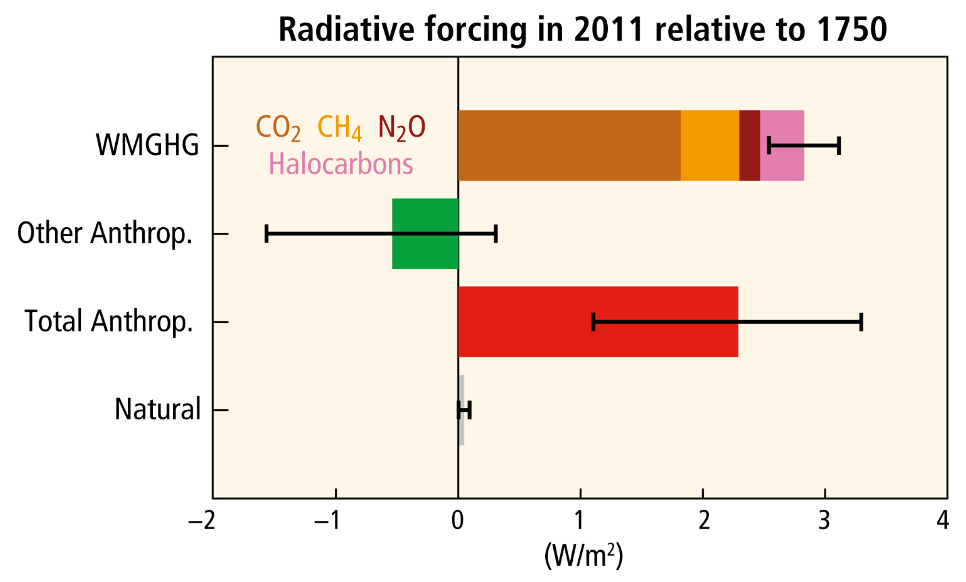
Definition of green house effect
Definition of green house effect
The greenhouse effect is a natural phenomenon that is essential to life on Earth. It is involved in the exchange of energy between space, the Earth’s atmosphere and the Earth’s surface. The Earth’s atmosphere reflects part of this radiation, thus modifying the thermal balance. Thus the atmosphere insulates the Earth from the vacuum of space as a greenhouse insulates plants from the outside air. When the solar radiation reaches the Earth, a part (about 30%) is directly reflected, i.e. sent back to space, by the Earth’s atmosphere and surface (oceans and continents). The incident rays that have not been reflected back to space are absorbed by the atmosphere (20.7%) and the earth’s surface (51%). The solar radiation absorbed by the surface of the ground brings heat to it, which it in turn gives back, day and night, to the atmosphere. The transfer of heat between the Earth and the atmosphere takes place from the hot (the Earth) to the cold (the atmosphere); it is done by convection (heating and humidification of the air in contact with the ground, then ascent of this air and release of the latent heat of the water vapor when it condenses into clouds) and in the form of far infrared radiation. The greenhouse effect only concerns these radiations, which will be partly absorbed by greenhouse gases (gases naturally present in the atmosphere which absorb part of the solar rays and then redistribute them in the form of radiations) which contributes to warm up the atmosphere.

The heat contained in the atmosphere is re-emitted in all directions in the form of infrared radiation; some of it escapes into space, some of it returns to the Earth’s surface and reduces the heat input from the surface to the atmosphere, thus opposing the cooling of the surface. Without the greenhouse effect (which implies, among other things, without water vapor and clouds), the average temperature on Earth would drop to -18°C.
The important dates of studies and discoveries in the past:
In 1780 Horace-Bénédict de Saussure measured the thermal effects of the sun’s rays according to the location on Earth with the help of transparent boxes that he placed in the valley and on the top of a mountain
In 1824, Joseph Fourier was the first to realise that the atmosphere can affect the temperatures of the planet Earth. Indeed, following his Memoir on the temperatures of the terrestrial globe and planetary spaces (published in 1827), he deduced that solar energy is capable of entering the Earth’s atmosphere in a fairly simple way and subsequently heating the Earth’s surface. Having captured energy, it will re-emit it in the form of « dark radiant heat » (infrared radiation), which will be absorbed by the atmosphere, which will re-emit a part of it towards the earth.
As a result of his research, many written facts are noted on the absorption by gases and thus physicists were able to carry out studies to show that without these gases the Earth’s temperature would be much colder, which would prevent any form of life on Earth.
In 1857, it was the American researcher Eunice Foote who first proved the existence of the greenhouse effect, discovering that carbon dioxide has a strong capacity to retain heat. She carried out an experiment in which she put different gases in glass cylinders and placed them in the sun to see how the temperature varied in the presence of these gases, and she concluded that CO2 had a great capacity to retain heat. And so an atmosphere consisting mainly of this gas would give the Earth high temperatures
In 1861, water vapour and carbon dioxide were identified as the main contributors to this mechanism by John Tyndall. He then suggested that a change in the composition of the atmosphere could influence climate change.
In 1896, Svante Auguste Arrhenius estimated for the first time the impact of CO2 on the Earth’s temperatures. He said that if the amount of CO2 doubled, the temperature would rise by 4°C.
In 1909, Robert Williams Wood showed that, contrary to popular belief, the blocking of infrared radiation by glass is not the main mechanism that explains the functioning of a greenhouse.
Climato-scepticisme:
Climatosceptic, is a neologism invented towards the end of the xxthcentury by contracting the word climate and sceptiscism. Climate refers to global warming, and sceptiscism means not believing or agreeing with something. Therefore, climatosceptiscists are people that don’t think (unlike the majority) that global warming is caused by human activities
CLIMATO-SCEPTICISME HISTOIRE
Depuis les rapports du GIEC de 2001 et de 2007, il existe un consensus quasi-général sur les causes du dérèglement climatique. De nombreuses preuves montrent qu’il serait lié à l’activité humaine, notamment à travers l’émission de gaz à effet de serre.
Les projections du GIEC indiquent que la température pourrait augmenter de 1°C à 6°C au cours du XXIe siècle, en lien avec l’augmentation dans l’atmosphère des gaz à effet de serre. Ceci provoquerait des conséquences inquiétantes en matière de maintien des écosystèmes sur Terre.
Les climato-sceptiques : des voix anti-consensus
Il existe deux controverses climato-sceptiques : l’une réfute les fondements scientifiques de la théorie du réchauffement climatique, arguant que les variations climatiques sont normales au cours du temps, ou encore critiquant les travaux du GIEC.
D’autres voix critiquent le discours politique lié à l’urgence climatique, arguant, dans une perspective libérale, que ce n’est pas à l’Etat d’agir pour tenter d’enrayer le dérèglement climatique.
L’Oregon Petition, lancée en 1999 en réaction à la signature du Protocole de Kyoto, marque le début du mouvement climatosceptique sur la scène internationale. Celui-ci reste toutefois largement minoritaire au sein de la communauté scientifique.
Qui sont les climato-sceptiques ?
Parmi les scientifiques, on citera le climatologue Richard Lindzen, le géophysicien Vincent Courtillot ou le physicien Freeman Dyson. Certains hommes politiques se disent également climatosceptiques.
Claude Allègre, géochimiste de formation, a dénoncé L’imposture climatique dans un livre publié en 2007. Il considère que les causes du réchauffement climatique ne sont pas certaines.
Nicolas Sarkozy a, en septembre 2016, opéré un virement climatosceptique en déclarant que l’Homme n’est pas le seul responsable du changement climatique. Il était pourtant à la pointe des questions écologiques lors de la mise en place du Grenelle de l’Environnement en 2008.
Donald Trump, lel’ancien Président des Etats-Unis, se proclame également ouvertement climatosceptique. En 2012, il a écrit sur Twitter : « Le concept de réchauffement climatique a été créé par les Chinois afin de rendre les entreprises américaines non-compétitives. »
Le climato-scepticisme en perte de vitesse ?
Les thèses climatosceptiques semblent de moins en moins avérées par la communauté scientifique, au vu du nombre de preuves grandissantes de l’origine humaine du réchauffement climatique. Toutefois, le climato-scepticisme reste parfois brandi par les politiciens conservateurs pour freiner toute action en faveur du climat.
Souvenez-vous : début 2010, surfant sur le tout récent échec de Copenhague, une vague climato-sceptique concertée dans les médias anglo-saxons de Grande-Bretagne, des Etats-Unis et d’Australie attaquait les experts du Groupe d’experts intergouvernemental sur l’évolution du climat (GIEC) pour relever des erreurs, montées en épingle pour faire douter de l’opportunité même de la lutte contre le réchauffement de la planète
Les climato-sceptiques en berne
Le « succès » de l’opération de communication fut sanglant : des mois de rétropédalage de la part du GIEC et des promoteurs d’une lutte plus forte contre les changements climatiques. Au final, les erreurs dénoncées s’avéraient en partie correctes, mais très isolées et mineures par rapport à la masse des preuves accumulées de la responsabilité humaine dans la modification de l’atmosphère. Peu importe, le but des climato-sceptiques avait été atteint : ralentir les décisions et faire naître le doute. La même tactique que celle employée naguère par les industries du tabac sur le lien entre tabagisme et cancer : gagner du temps face à l’évidence.
L’Accord de Paris et assurément les mois qui suivront marquent là aussi un tournant. L’élan constaté, même s’il n’est qu’un « point de départ », montre qu’aucun gouvernement dans le monde, y compris les producteurs d’énergies fossiles, ne conteste la réalité scientifique du changement climatique. Le fait même que l’ambition soit plus forte que limiter le réchauffement à 2 °C d’ici la fin du siècle et aille au-delà montre l’évolution nette des esprits. Aucun gouvernement dans le monde, y compris les producteurs d’énergies fossiles, ne conteste la réalité scientifique du changement climatique.
Le mouvement climato-sceptique enfin aux oubliettes de l’Histoire
Entre temps, la COP21 aura également été marquée par une dénonciation efficace par Greenpeace du fait que certains scientifiques pouvaient être achetés pour propager des arguments climato-sceptiques.
En France, la tentative du dernier quarteron de climato-sceptiques réfugié derrière Claude Allègre – que l’on n’entend plus – à l’Académie des Sciences n’a pu convaincre les autres académiciens. Le débat, acrimonieux, au sein de l’Académie s’est soldé par une absence de visibilité des arguments climato-sceptiques contrastant fort avec la présence médiatique de l’ancien ministre de l’éducation et de la recherche sur ces questions en 2010.
Même aux États-Unis et en Grande-Bretagne, où la voix climato-sceptiques reste beaucoup plus forte, les sondages montrent que l’opinion publique comprend largement la réalité du changement climatique et l’agitation des opposants à la lutte contre le réchauffement ne sont pas au pouvoir. La victoire de Hillary Clinton assurerait une continuité dans le soutien décisif que le Président Obama a apporté à ce combat en menant personnellement des négociations bilatérales avec la Chine pour assurer un accord à Paris. Une victoire républicaine assurément signifierait un recul décisif.
Enfin, les changements récents de majorité politique en Australie et au Canada ont été pour une large part dans le succès de Paris.
En somme, les climato-sceptiques sont jusqu’à preuve du contraire un reliquat de l’Histoire. La page se tourne. Les sursauts du lobby des énergies fossiles se manifesteront dans les années à venir, mais Paris marque un coup décisif et tourne la page du climato-scepticisme.
Radiative forcing

During our researches on the radiative forcing, we found this graph from the IPCC. It is only a couple years old, yet we can clearly see that major studies have been made during that period of time : for example when the graph was created the influence of methane (CH4) in the radiative forcing was largely underestimated. It shows us that we still don’t know everything about climate change and that studies will and must be made in order for us to expand our knowledge about this very important subject so that we can act and react in the best way possible
